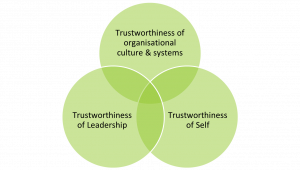“She says all ideas are welcome here, but then in the next second tells us all what to do. There’s no point in speaking up. It falls on deaf ears”
“Everyone just smiles on camera and says they are fine. I just stay on mute and keep my head down. I don’t know how to tell them I am not coping. That each day is a stretch for me.”
“My manager spoke poorly about me behind my back. He didn’t share what was going on, My job changed and he disappeared for weeks on end during lockdown. I did not know what to do”
Do any of these scenarios sound familiar?
It is precisely in these challenging times of the pandemic that we most need psychological safety to speak with candor and vulnerability. Yet it is often in these very times that we inadvertently damage psychological safety and betray trust.
Our trust is broken on three levels. At an organization level budgets have been slashed, jobs lost, businesses reorganized, jobs changed, performance pressure increased, tensions have risen, and tempers flared. At a leadership level, individual managers are straddling business as usual operations with transforming the business in pivoting products and processes. And business pressures trump individual fragility. Some leaders have sown distrust in their teams as they micromanage WFH arrangements, take on key decisions instead of devolving these, show no tolerance of performance deviations. A culture of working 24/7 has become the norm in many businesses. Oftentimes leaders do not pay enough attention to each individual member of their team. Jobs and pay have been cut and those remaining may tolerate higher levels of stress and work pressure to keep their jobs and prospects of career security. At an individual level, burnout, emotional exhaustion and mental challenges have been skyrocketing and this is not sustainable. We face loss, grief and low-grade fear each and every day. On a personal level we withdraw and do not bring our voice or ideas into the team and we do not speak up with our manager to either raise ideas or challenges, let alone to share how we really feel.
THREE LEVELS OF TRUST
Trust dimensions straddle self, leadership and organizational culture & systems












